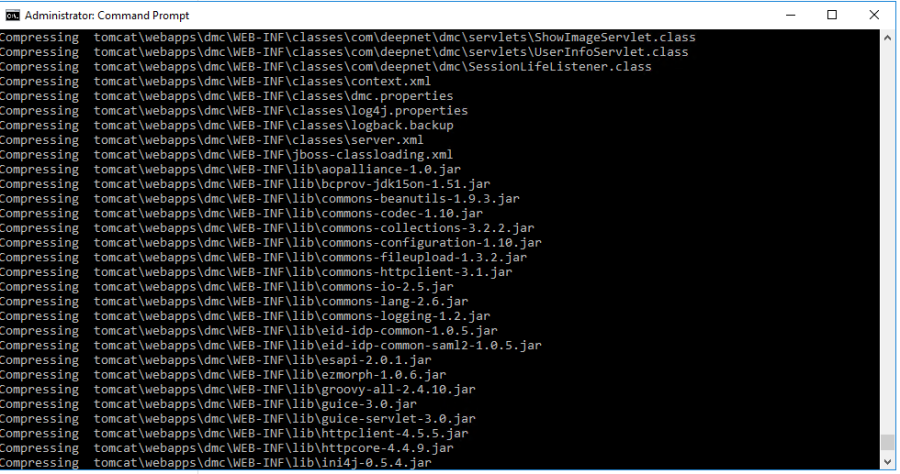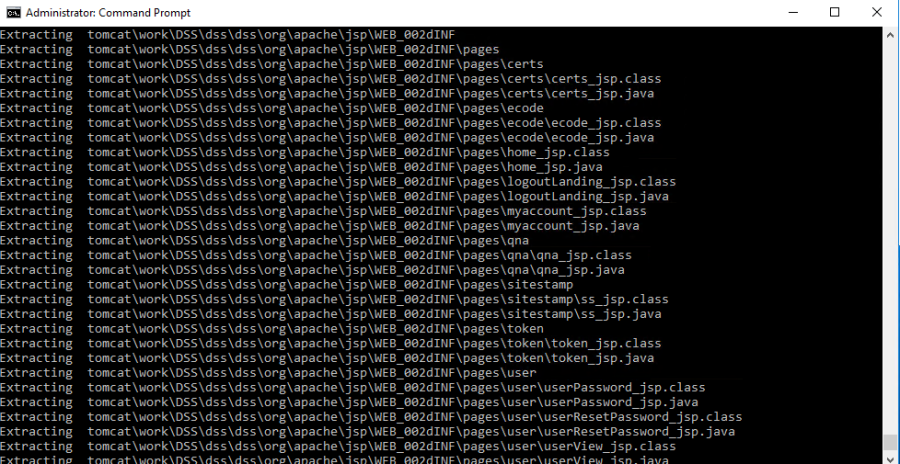The utility dsclone (DualShield Clone Tool) is primarily used for setting up a cluster of DualShield servers. DSClone is used to create mirror servers from the primary DualShield server. In addition, DSClone can also be used to move an existing DualShield server to another machine.
Prerequisites:
- The new machine should have similar hardware as the existing machine.
- The same OS must be installed on the new machine and in a hard disk with the same drive letter.
As a matter of fact, the machine hardware do not have to be identical. You may have a similar OS instead of identical, for example, SBS 2011 and 2008 R2. But make sure both machines have the same OS architecture, e.g. x86 or x64, and the new machine has sufficient memory for running the Java virtual machine.
The MYSQL service will be stopped when running this tool.
Steps
- Download the clone tool from our support web page, to the machine, your current DualShield server is hosted on.
2. Extract the file to a temp folder (e.g. C:\DSClone) where it is readable and writable;
3. Open the windows console in admin mode. Change directory to the clone pack directory on the local drive. In my example it will be in C:\DSClone\dsclone\clonepack.
4. Run "dsclone backup";
5. The DSClone tool will now start compressing all the configuration from your existing DAS setup, and if you are using the MySQL database that is shipped with the product, it will also compress and take a snapshot copy of that.
6. The process will create a bucket file, within the clonepack folder. This will house all the compressed snapshot of the existing setup. Wait it to finish. as this can take several minutes.
7. Copy the whole folder (c:\DSClone) to the same location new machine;
8. On the new machine open the windows console in admin mode. Change directory to the clone pack directory on the local drive. In my example it will be in C:\DSClone\dsclone\clonepack.
9.Run "dsclone deploy" and follow the instructions on the screen.
10. You will be asked to make sure there is no Dualshield server already installed on this machine:
Type Y.
11. The clone tool will now begin extracting the contents of the Bucket that resides in the clonepack directory that was copied over from the primary machine. Again, this will take a few minutes.
12. After completion you will finally be asked if it can overwrite the Windows host file.
Type Yes. It will type an entry into the host file that will add the entry so that the same FQDN of the primary DAS server will point locally.
13. Give the DualShield server service time to start before launching the DMC.
Database Connection:
If you installed DualShield with the embedded MySQL, then yes, as the clone utility takes care of the duplication of this database.
If you installed DualShield and linked it to an external SQL server that is running on another dedicated machine, the answer is yes as well.
If you installed DualShield and linked it to an external SQL server that is running on the same machine, then you have to install the SQL server on the new machine, and migrate(backup then restore) the database, followed by change of database connection string in server.xml which is located at the folder "C:\Program Files\Deepnet DualShield\tomcat\conf" by default.
You can find the connection string by searching "com.mysql.jdbc.Driver".
url="jdbc:mysql://192.168.111.124:3306/...."
Change the IP(FQDN) with the new one, or simply use localhost. Don't forget to restart DualShield service after it.
We also provide Linux version of dsclone, it is basically shell script, you can get the instructions by reading the script itself. I am joking, actually the package includes a text file for the instructions.
As you can imagine, you will need to update the authentication server IP address in agents accordingly.






